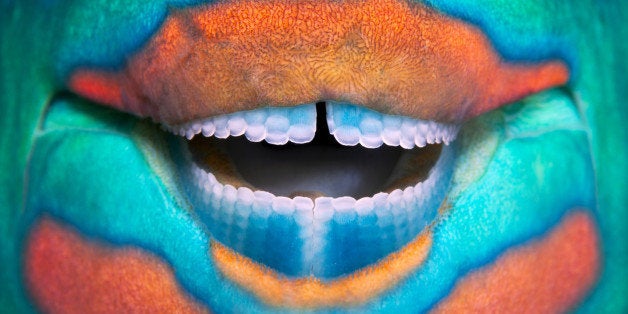
It’s hard to say “coral molars” repeatedly without tripping over your tongue, but having teeth -- and other bones -- made from coral is becoming increasingly plausible.
It sounds crazy, but sea coral has actually been used in bone grafting for years as an alternative to using bone from cadavers or synthetic materials, which can introduce disease or infection. Now, recent business successes and medical research suggests that coral bone grafting could become more mainstream.
First, some history: Back in 1988, Eugene White and his nephew Rodney White first noticed coral’s similarities to bones when diving in the South Pacific. They went on to discover that sea coral naturally possesses the similar porous structure and calcium carbonate of human bones.
Over the years, researchers have developed coral as a bone grafting material by taking calcium carbonate from the exoskeleton of sea coral and converting it into a mineral called coralline hydroxyapatite. Because the coral’s patterns matched the tissue in human bones, the coral could provide a platform for bones to grow. But sometimes the coral didn’t biodegrade; it sort of stayed in the body, creating problems for the patient, including re-fracturing or turning into a source for bacteria growth.
Then, last year, Zhidao Xia, a lead researcher in coral bone grafting, and fellow researchers at Swansea University published a study in the journal Biomedical Materials, saying they had found a way to make coral more compatible with human bone. Using their technique, 16 patients with bone defects healed four months after coral graft surgeries; two years later, the coral had naturally left the patients' bodies.
The Swansea team's advancements made coral bone grafting more feasible, and now the excitement is fueling business ideas. In Israel, for instance, OkCoral, a one-man business founded by Assaf Shaham, farms corals specifically to be used as stand-ins for bones. Shaham's specimens are priced at $250 per vial, and he has raised $2.5 million over the six years he's been in business.
Although coral bone grafting is still very much a "fringe thing," according to Dr. Ruth Gates, a lead marine researcher at the Hawaii Institute of Marine Biology, coral reefs are definitely developing a reputation as 21st-century medicine cabinets. According to The National Oceanic and Atmospheric Administration, corals can be used to treat cancer, arthritis, bacterial infections and even Alzheimer’s disease.
So what does this all mean?
"My take-home from all this," Dr. Gates told The Huffington Post, "is that it really draws attention to the fact that corals are important to human health.”

